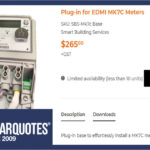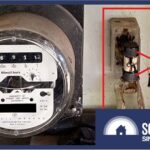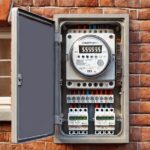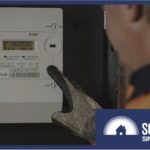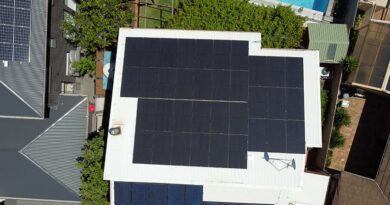Solar’s Hidden Metering Cost – And Tips To Avoid It
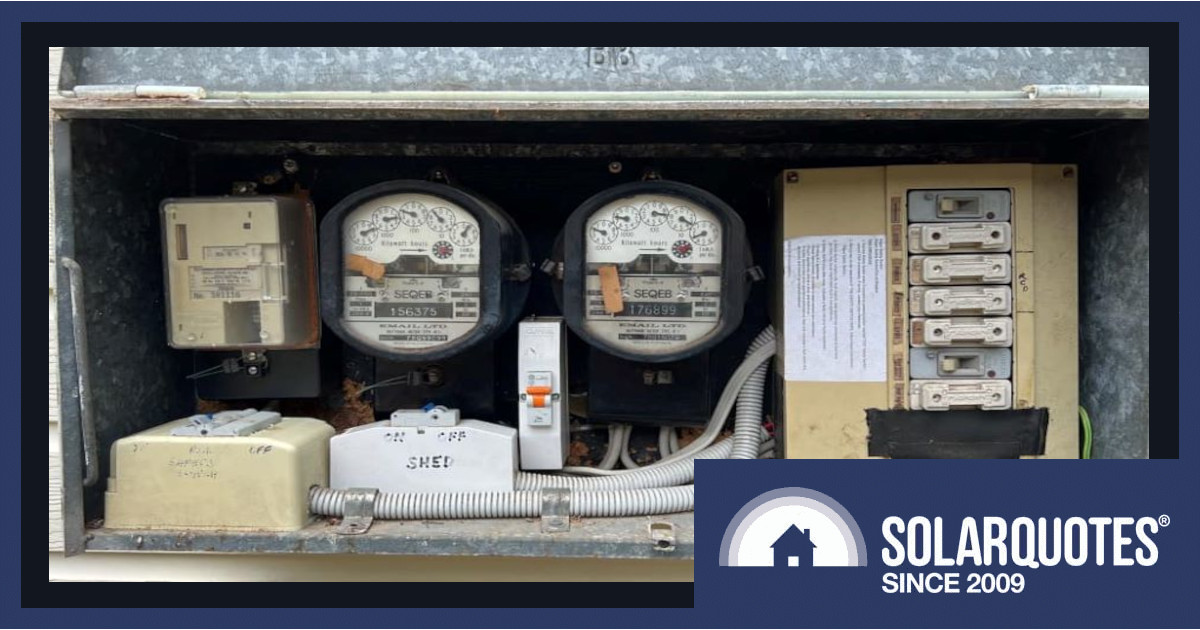
Inaccessible, no hinge, ceramic fuses, disintegrating chipboard, duct tape! This is a hamburger with the lot.
Solar Electricity Meters – The Situation Is Unhinged
Recently I fielded a question from a frustrated customer who couldn’t believe she was given so many different opinions about what she needed to do with her retail electricity meter. It seemed that even the eight solar industry professionals had eight different ideas. It can be a minefield.
Utility metering is like an unwanted hot potato. In the days of yore, the network authorities (DNSPs) used to handle this task. But since implementing “Power Of Choice” metering contestability rules, the ball shifted into the electricity retailers’ court. Now, it’s a responsibility that everyone in the electricity industry wants to dodge.
Here’s an example from Queensland.
The Problem : An Old, Non-Compliant Meter Position
Despite the customer having a remotely read meter that nobody had visited in 5 years, concerns were raised that a new one needed to be installed, which meant possible asbestos removal, a new box, a hinged panel for access to the wiring behind, and maybe even the huge expense of complete relocation to the front of the house. This can even mean service upgrades to the house, and in one instance, I have seen quotes for $15,000 to directional bore under a roadway because a legacy overhead supply cable didn’t meet current rules.
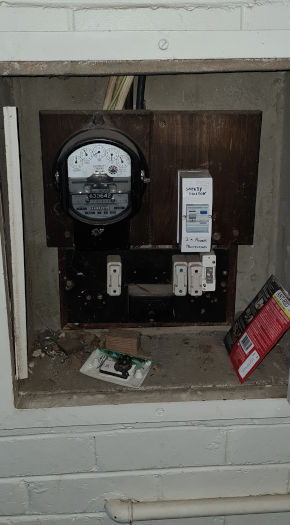
Located in the laundry, no hinges, asbestos, ceramic fuses… this place got demolished.
The Solution: Get Your Retailer Involved
If you’re in the throes of getting solar panels, or it’s on the list of things to do soon, reach out to your electricity retailer. Ask if they can program your meter for solar remotely. If your meter is modern enough (i.e. it’s a smart meter) and there’s an internet connection available, they will likely be able to carry out the task without any technician needing to darken your door.
However, if the electricity retailer advises that your meter cannot be reprogrammed for solar, they’re legally entitled to charge you for a new one. I think it’s the height of hypocrisy that they want your money to make their business cheaper to run, so don’t give in too easily.
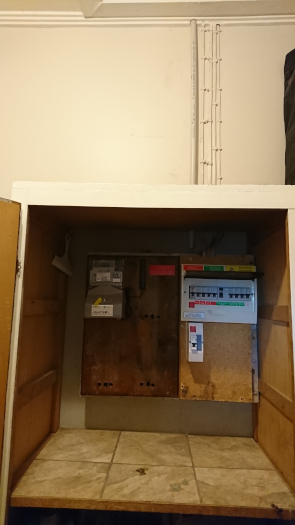
Amazingly the retailer changed this meter to the latest remote read 4G network-connected unit, (without the customer initiating it) despite no hinges and tiny cotton/rubber consumer mains. The wiring in the roof was a death trap.
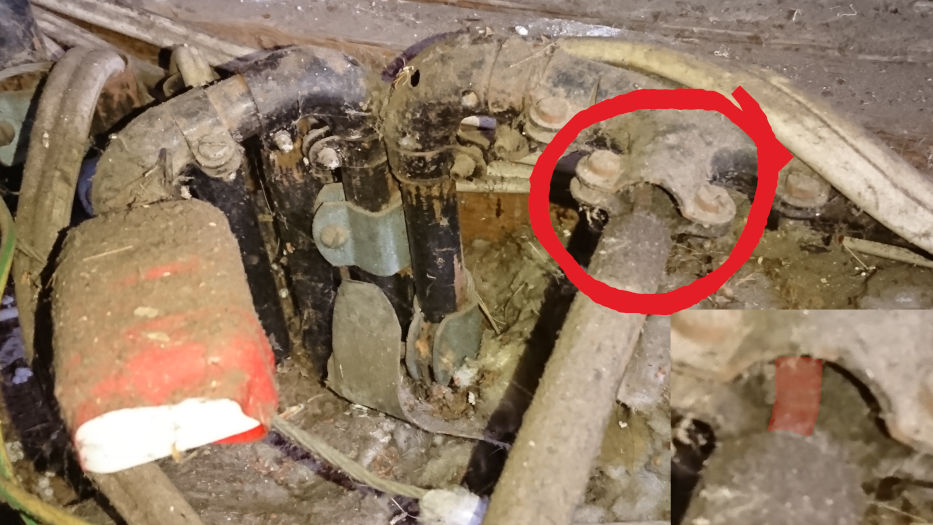
This is the death trap mentioned in the previous image. Disturbing wiring like this kills people. When old metal conduits fall apart, they can shear through the crumbly rubber insulation of the live wires inside. With the earth path broken, anyone touching the conduit can be electrocuted.
Switching Electricity Retailers Can Save You Paying
If you do need a new meter, consider shopping for an electricity retailer offering a free meter change as an incentive to earn your business. This customer-acquisition strategy is not uncommon among retailers as it costs about $500 in marketing costs for an electricity retailer to sign up a new customer. Tell them you are keen to sign up – but not if you must pay for the new meter.
The Rules of Engagement: Who’s Responsible for Your Meter?
Electricity retailers can change meters at their discretion. The key is that if they initiate it themselves, there seem to be fewer rules that apply. You need to encourage them to make the change without actually asking for a solar upgrade in the first place.
If you, the customer, initiate a meter change due to a solar application, they consider it a consumer driven upgrade. The authorities see it as an opportunity to get everything brought up to current specification at your expense, so brace yourself for potential complexities.
To assist you, we’ve compiled a handy guide on what can be involved if you need to upgrade your switchboard.
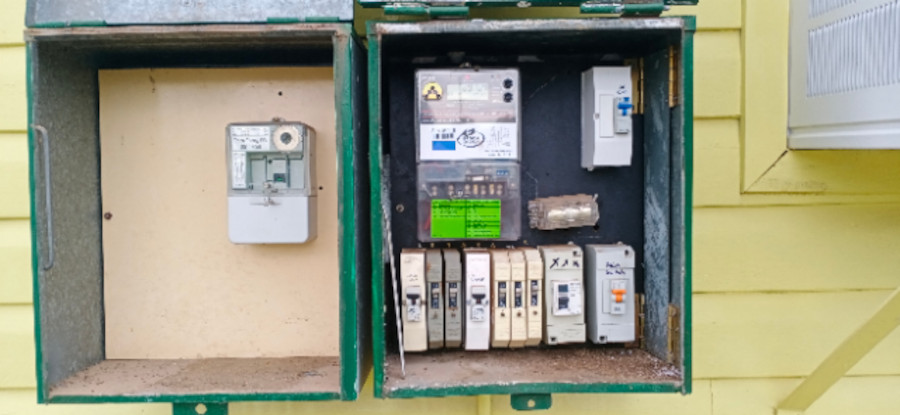
These panels are hinged, but the black one is still likely to be asbestos. It’s time these were overhauled.
It’s Not All Bad News
Navigating the complexities of utility metering shouldn’t be so hard, but it becomes a manageable task with the right information. Remember, there’s always a solution, even if it means switching retailers to get the best service. Smart metering gives you the customer more tools and more options to monitor consumption and cost, while also offering the networks more detailed information to better manage the energy transition, uptake of electric mobility and electrification of everything else.
One of the best things about owning a smart meter is you can download almost real-time consumption data (if you know where to download your smart meter data), and then analyse it with powerful, free tools.
Appendix: An example of the rules.
If You’re Having Trouble Sleeping; Read on…
Your DNSP may dictate the rules, but the meter is provided by a subcontractor working for the electricity retailer. The subcontractor could be any of numerous companies, such as Intellihub, ActiveStream, Vector, TMS Group, and Plus ES.
However, the ease or difficulty of the process largely depends on the electricity retailer’s initiative and approach. It can come down to the mechanic on the day. Pragmatists may install whatever they have at hand and move on, while others can be sticklers for the rules. And as you are about to find out – the rules are many.
For customers with an unquenchable thirst for knowledge, you can delve further into metering intricacies by visiting various online resources such as
The Metering Rules Are Onerous: Queensland As An Example
To understand why the professionals in the example at the beginning of this post were so confused about the requirements for a new, compliant meter, I thought sharing some of the rules would be helpful.
In Queensland, you can find the metering rules at various online resources, including Energex’s contractor information, the Queensland Electricity Metering Manual, and the Queensland Electricity Connection Manual (QECM).
For a quick summary, this is the part where you have to supply the box, for two different authorities (the DNSP and the retailer) to put their stuff in, and it has to meet their rules.
Queensland Electricity Metering Manual
2. METERING REQUIREMENTS
General: This section includes metering requirements, for specific information contact the metering provider.Where a customer directs a retailer to request metering or tariff changes, any alterations to the
customer’s switchboard installation or meter enclosure shall be the customer’s responsibility (e.g. removal of asbestos contaminated waste).Metering equipment deemed to be necessary by the metering provider to record electricity
consumption shall be supplied and maintained by the metering provider and shall remain their property.Network devices deemed to be necessary to control electricity consumption shall be supplied and maintained by the distributor and shall remain their property.
All metering and control equipment shall be back-wired and mounted on a hinged panel attached to a metering enclosure or a switchboard frame.
The QECM connection manual provides a detailed list of metering rules, spanning seven pages from page 70 onwards. It outlines the responsibilities of customers for meter housing and maintenance, suitable locations for meter installation, and mounting specifications for metering equipment. I’ve extracted some of the appropriate parts here :
Queensland Electricity Connection Manual
Page 70 of 127 Manual 01811 Ver 3
Joint document between Energex and Ergon EnergyMetering and Control Equipment – Accommodation
The customer shall provide and maintain at their expense, suitable space, housing,
mounting and connecting facilities to accommodate meters and control equipment for
each supply arrangement (e.g. general and controlled supplies).The customer shall provide safe and ready access so that meters and control
equipment may be fixed, read, tested, adjusted and removed without difficulty at any
reasonable time but generally between the hours of 8.00am to 5.00pm Monday to
Friday.Unless otherwise approved by the distributor, or as varied by Section 6.9.4, all meters
and control equipment supplied for any one installation (as defined in the National
Electricity Rules) shall be located in one readily accessible position, preferably on an
outside wall at the front of the building.Direct connected meters shall be positioned in the same location as the Main switch
and MEN point to allow required testing to be undertaken by the distributor.Residential Properties
On single or multiple residential premises a meter position suitable to the distributor
shall satisfy the following criteria:(a) unless otherwise approved in writing by the distributor, meters shall be erected on
the side of the premises facing a street from which there is pedestrian access or
within the first 2 m along an adjacent side of the premises. (refer to Drawing QECM
6.5); and-.
(b) meters shall not be located behind any fence in an urban area, other than the
perimeter fence located at the extremities of the property boundary.The following locations are unsuitable for the installation of all metering equipment:
(r) Secured private areas.Metering and Control Equipment – Mounting
Mounting Arrangement
All meters, network devices and metering isolation links must be mounted on a side
hinged panel so that the metering and control equipment always remains in the vertical
plane. Meters and network devices must be mounted vertically with cable connections
at the bottom.Panel Fixings
(a) Meter panels shall be constructed of a durable, non-conducting, fire resistant
material with low water absorption properties and shall not contain asbestos.Alterations requiring a replacement meter panel shall comply with the above.
Existing meter panels in good condition that do not contain asbestos do not
require replacement however insulated fire-retardant backing boards with low
water absorption properties and not containing asbestos must be installed behind
all new and retrofitted electronic equipment associated with the customers
metering and control equipment on existing panels that are not constructed of fire
resistant material.
Original Source: https://www.solarquotes.com.au/blog/solars-hidden-metering-cost/




